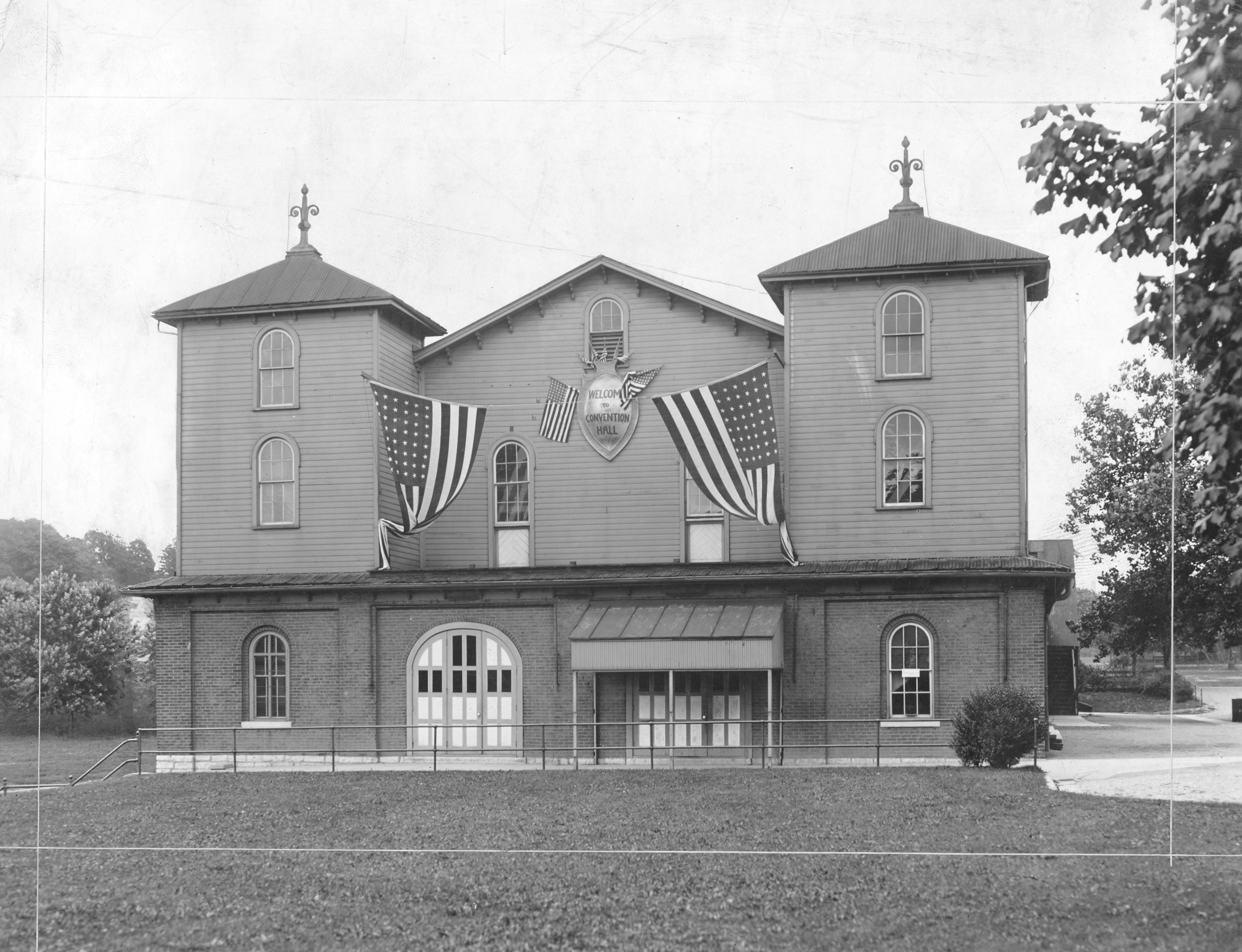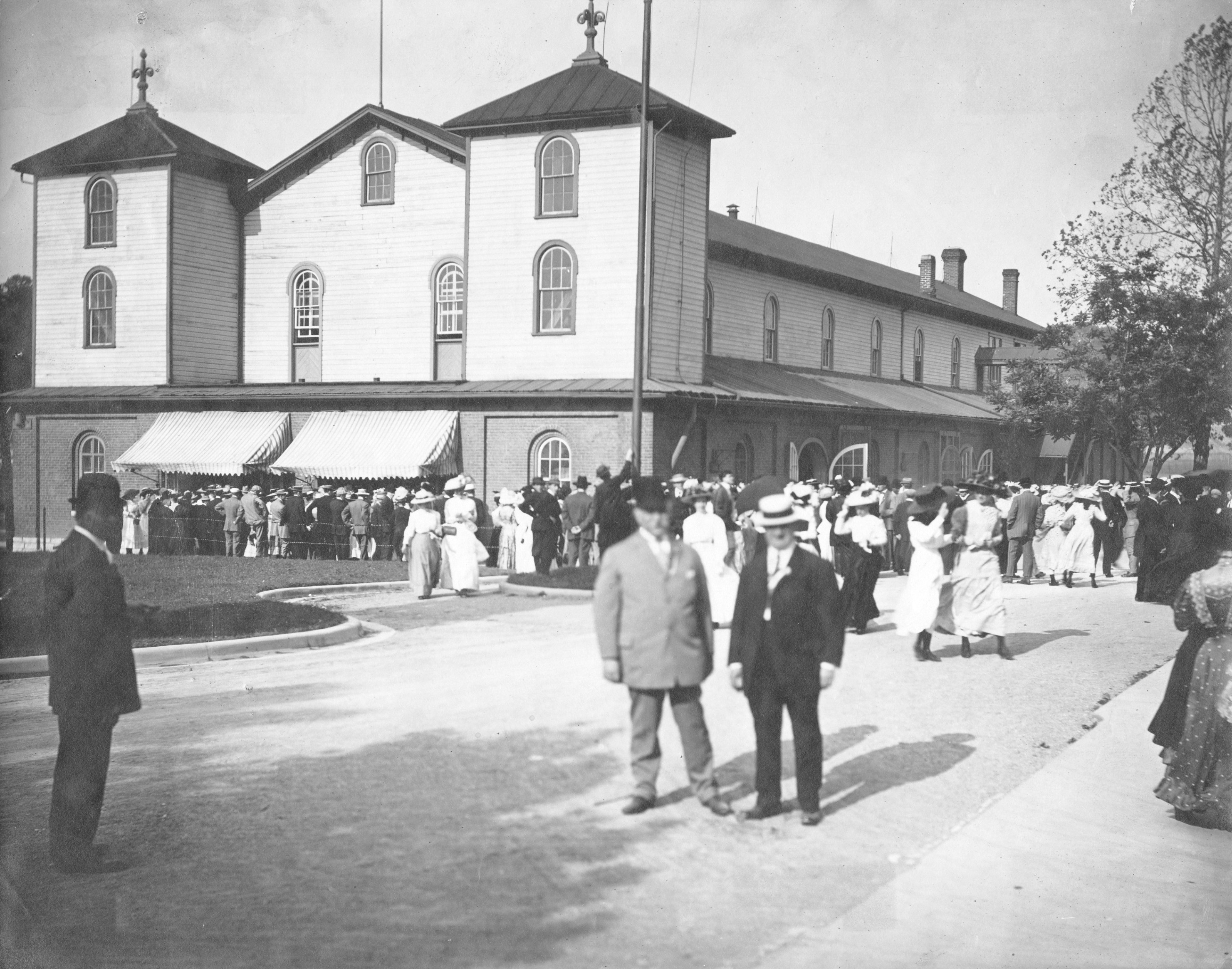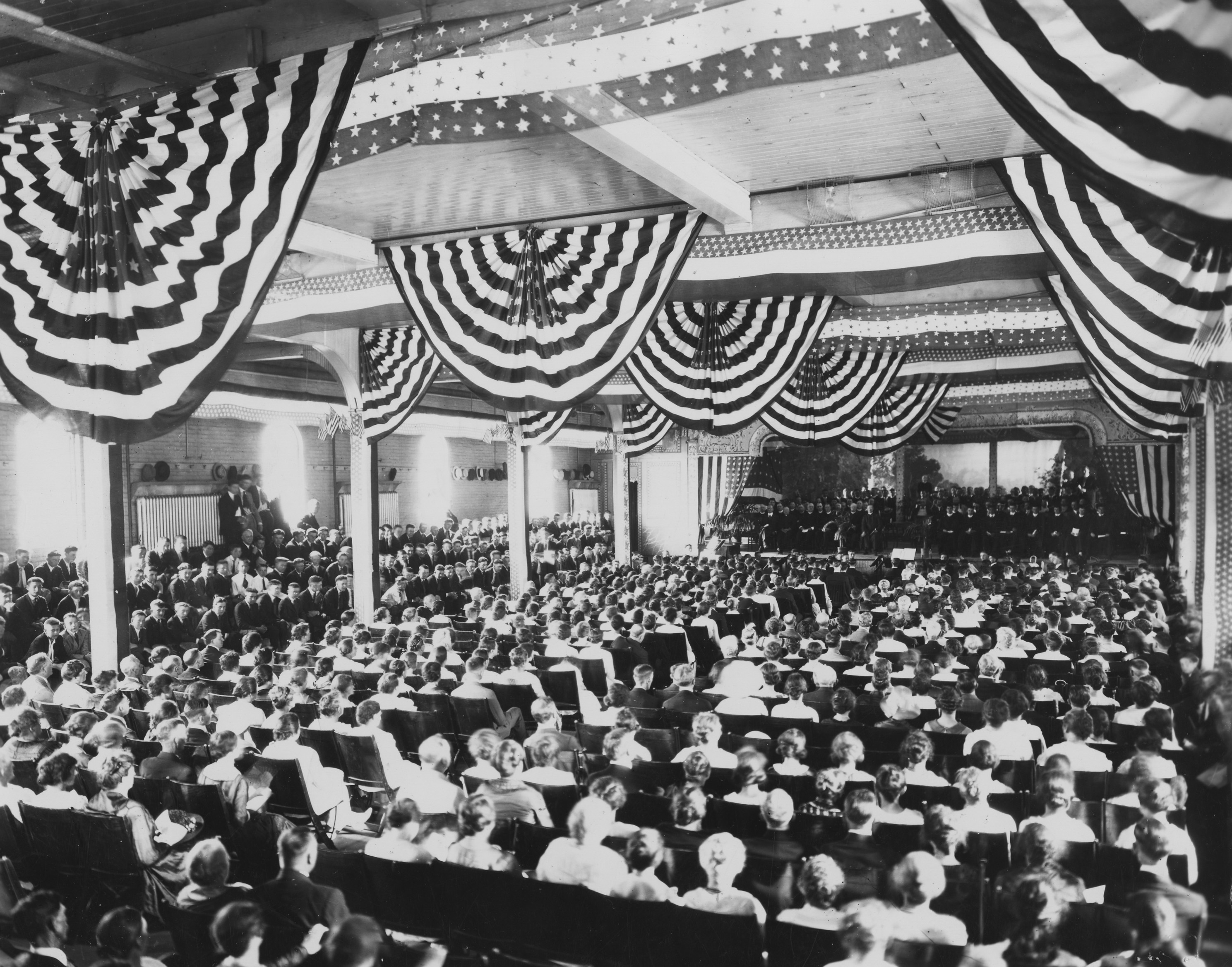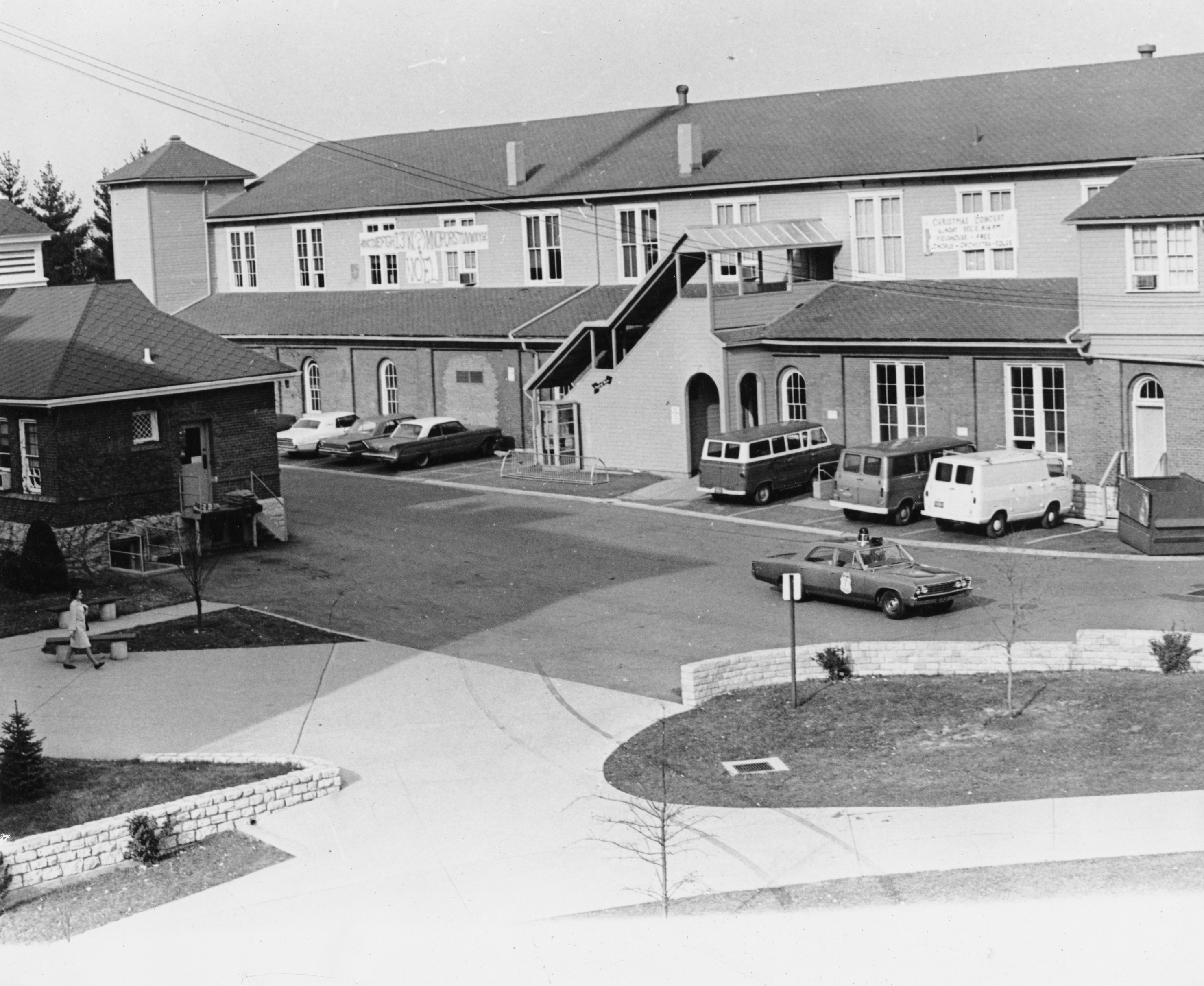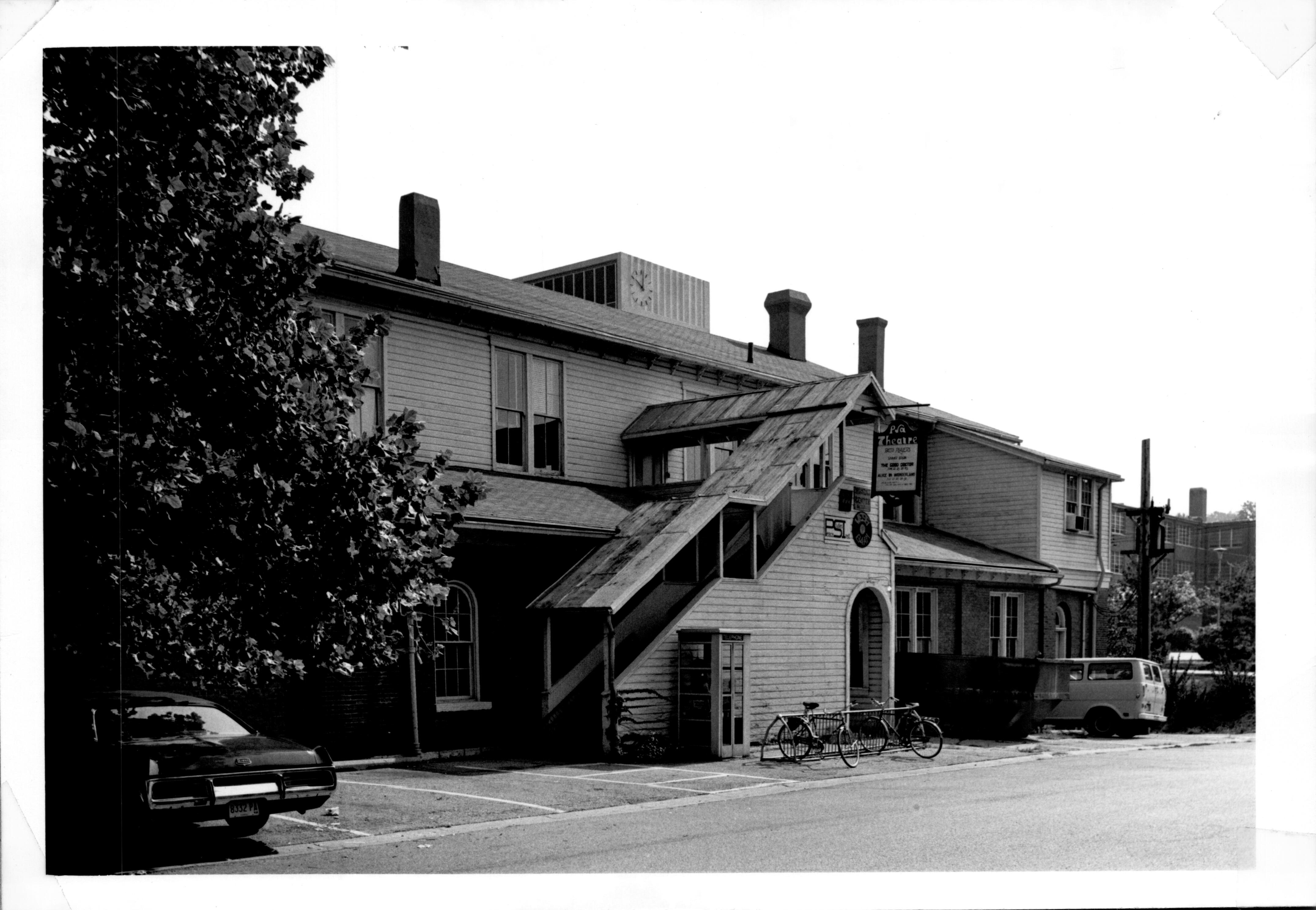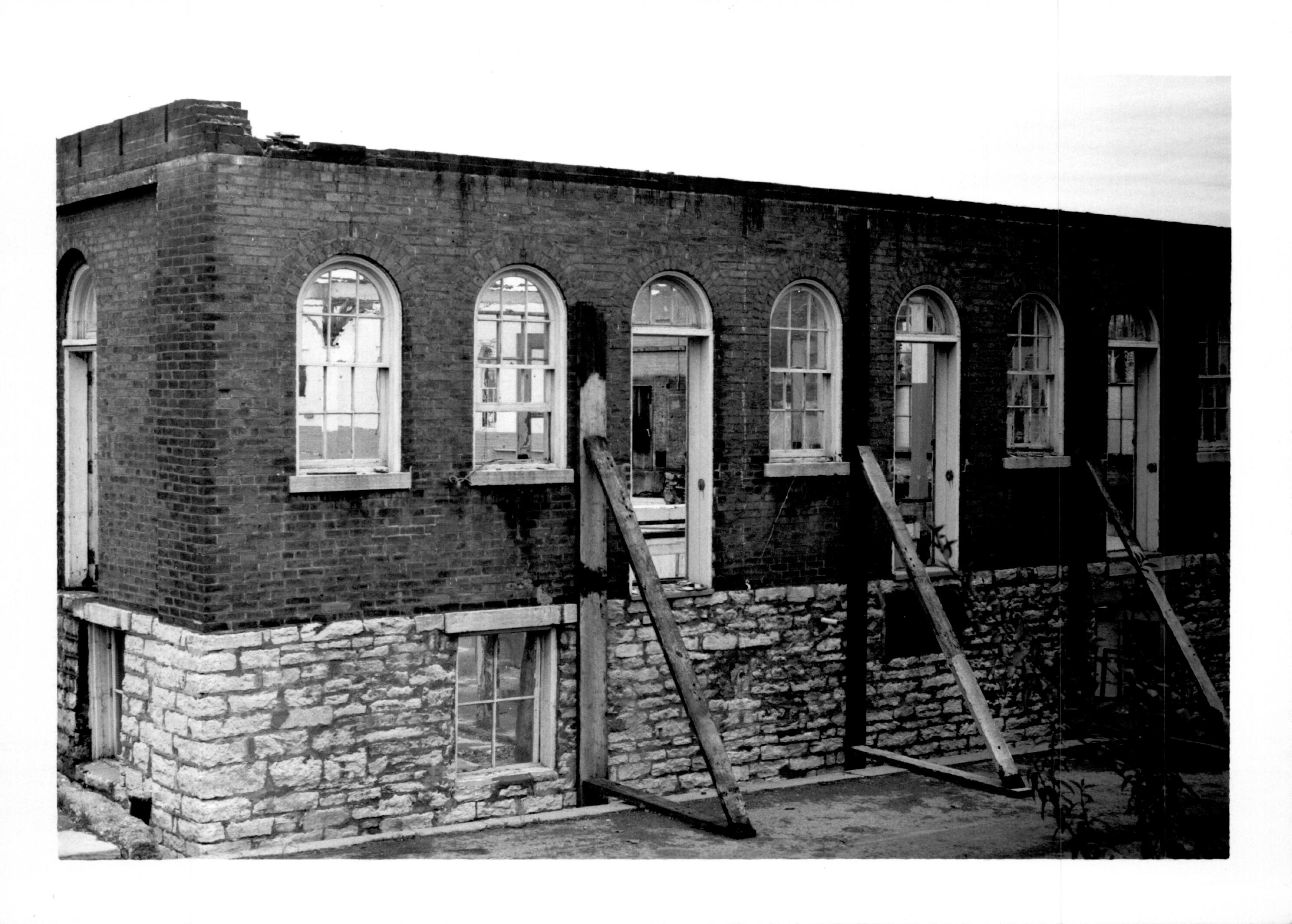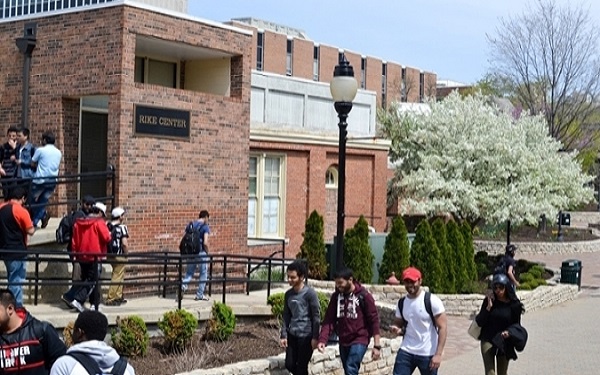Blogs
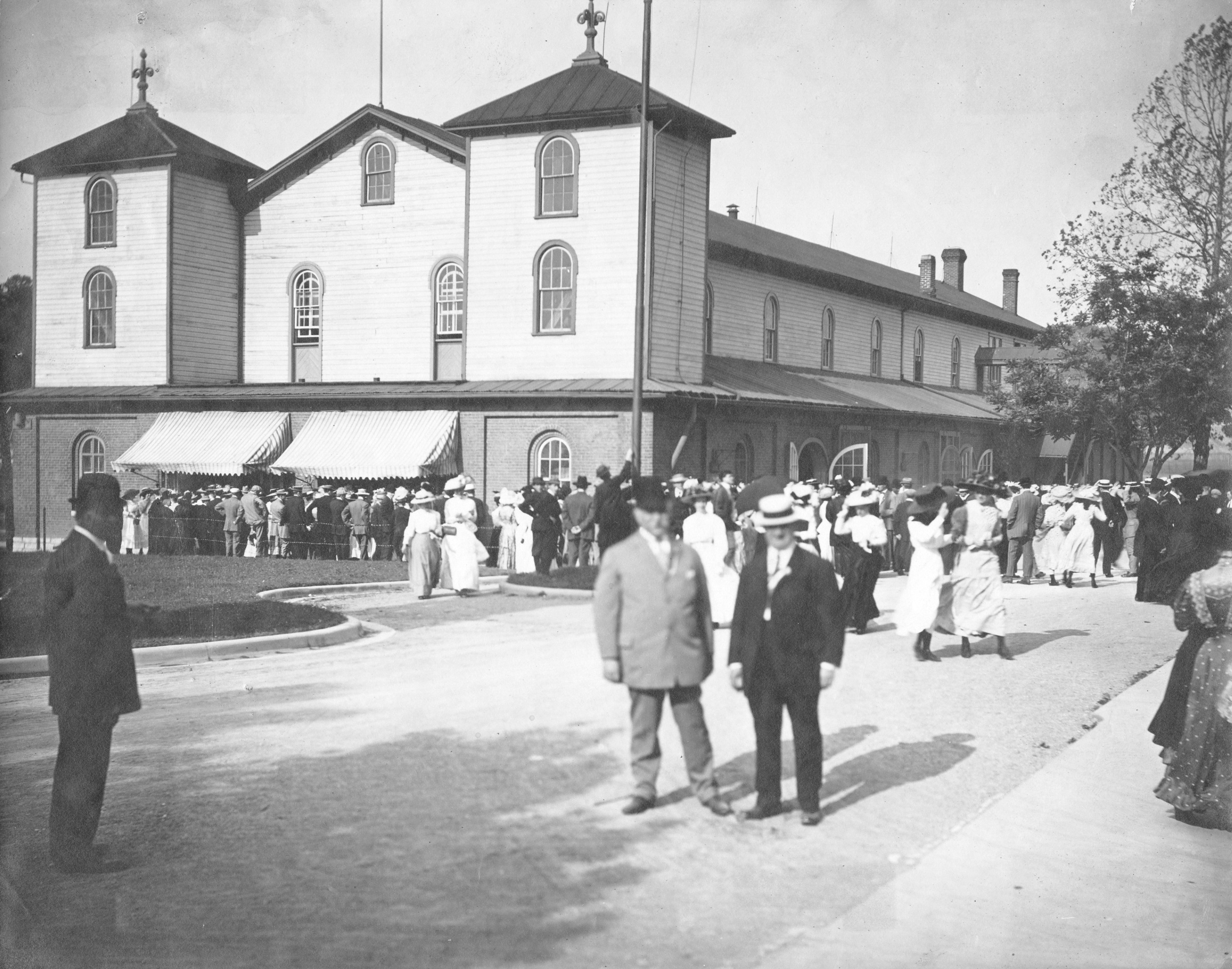
Reading the signs of the times: not just another building
By Brenna R. Seifried
The UD tour guide, walking skillfully backwards and speaking to a crowd of potential students, gestures to a long, low building opposite Heritage Coffee House, next to St. Mary’s. “Have any of you considered studying abroad? I studied for a semester in Germany and it was such a great experience. If you’re interested in studying abroad, we offer lots of opportunities for it, and Rike Center is where some of UD’s international programs are housed.”
These few sentences are a simple enough introduction to an unassuming building that you may have walked past any number of times on your trek through campus, but they hide a deeper, more complex story, involving volatile chemicals, song and dance, peace pilgrimages, and a radio station.
First built in 1874, the “Convention Hall,” when erected, was the largest and only one of its kind in Ohio. Built at a cost of $10,500, the original dimensions of the building were 110x70 ft, or 7700 square feet, about half the size of an ice hockey rink. Built of brick on the first floor, the second floor was smaller and originally housed students in dorm rooms, which then became classrooms later on when fire destroyed the Convent (now the location of St. Joseph Hall).
In 1911, a stage was built on the east end of the ground floor so that the building could house performances more easily. This decreased the floor space for the gym, which made it unsuitable for anything but intramural sports and physical education, which it housed for many years. According to Brother William Wehrle in A History of the University of Dayton from about 1936: “Today the gymnasium proper is used as a combination auditorium and playhouse. It is not large enough for intercollegiate sports; consequently only intramural sports are conducted in it. The second floor has been converted into the chemistry department.” Then referred to as the “Play House,” it held annual commencement ceremonies for the university for many years, ending in 1920.
Additions were made to the building in its early years, including a large outdoor staircase to the second floor in 1907, as well as a number of improvements in 1911, 1915, 1934, and 1945. In 1938 the music department moved into the back of the building, and rallies, convocations, theatrical events and athletic contests were all held there regularly. In the 1950s, it was known as the home of women’s sports, and was referred to as “The Old Women’s Gym.” Brother Tom Giardino, SM, notes that in Marianist lore, the “Old Women’s Gym” played an important role. At one point in the early 20th century, when the brothers would come to UD for their annual retreat in August, they would gather outside the gym and the Provincial would stand at the top of the outside staircase and read out ‘the Personnel’. “That is, the list of assignments of where the brothers would be living and teaching for the coming school year,” Bro. Tom says, “And after the reading, which was eagerly anticipated and included joys and sorrows, the brothers would get their train tickets from the local community director where they would be going. They had their trunks with them with all their worldly belongings and off they would go, till the next year, and the ritual would be repeated.”
It was also the home of the first Peace Studies Institute* at UD in the early 1970s, run by students Wayne Wlodarski, Vince McKelvey, and Jack Becka, who believed that war and violence were not solutions to the issues of the world. Through minicourses, workshops, and learning opportunities, the Peace Studies Institute engaged with local peace activities and connected students to a global peace movement. Vince remembers the space (and the staircase) with a mixture of fondness and amusement: “The space itself was, uh, interesting,” he reminisces, "The bottom part of the building, which still exists, was brick. Our second floor was wooden, perhaps rickety, and the access to it was via a wooden staircase that ran along the outside of the building. It was good of the university to provide space for organizations like ours."
By 1977 the building was starting to show its centenarian status, and some solution had to be found. Demolishing the building and replacing it with a new construction would have run into the millions of dollars, so the university asked the firm of Lorenz-Williams-Lively-Likens & Partners to rethink the building for its mixed-use purpose: the department of music was using the space, and so was engineering. The renovation plan saved a great deal of money, but also may have sacrificed some design features: one newspaper article from the time notes, “If the new half-arts half-engineering structure lacks exterior aesthetic charm, it makes up for it in usable space. And the renovated gym with its still-ivy-clad exterior has a cheerful air that ignores the remnants of its other lives– like Scarlett O’Hara with the ball gown she fashioned from the draperies that hung at the windows of the crumbling Atlanta mansion.”
In its new incarnation, the Rike Center for Performing Arts, inaugurated in 1978, became a home for the Arts of all kinds: music had practice cubicles, theater had a small black box space for performances, and the visual arts also found a home in Rike’s multi-use rooms. Over the following years, Visual Arts expanded to fill the entire space.
Joel Whitaker, current Art and Design Chair, remembers Rike Center with fondness. “[It was] a very active and open space with students working throughout the day and well into the night. It was a space that we constantly complained about— the ventilation, light, etc. — ceramics classes used the parking lot for raku firings and there was always the smell of adhesive and paint hanging in the air. But there were many wonderful things as well... the gallery was an open ceiling space so people would line the upper wall and look down on an exhibition.” This open space was available for students, faculty, and staff (as well as community members) to wander through and view the exhibitions, or even see the artists at work. “The open ceiling configuration allowed us to do some interesting programming”, Whitaker says, “The challenges of the building were balanced by our students and faculty and the ability of both to adapt and produce outstanding graduates.”
By 2012, UD was seeing a significant increase in the number of international students studying in Dayton and the number of students studying abroad. As part of its commitment to support internationalization and serve students, the university made a substantial investment in renovation of the Rike Center, as the Art and Design department moved into new quarters in Fitz Hall. Students coming from all over the world found a central home in the newly-renovated Rike Center, including an area called the World Exchange Lounge (WEx), in what formerly served as the gallery space. Classrooms with updated technology and a dedicated prayer room were important pieces of this transformation and signaled UD’s desire to welcome and support all students at the university.
Rike is now home to a number of offices serving international students, as well as global and intercultural programming. What was once a stage for performances a hundred and fifty years ago has shifted to classroom space where students and faculty engage in the work of teaching and learning. A bustling community of international students inhabit the halls that housed practice rooms, labs, and dorms. Echoes of the past lives of the Rike building can be seen if you look closely: a bricked-up curved doorway leading nowhere; a spot on a wall where a floor support beam used to sit; a utility box artistically covered with painted door keys.
Continuing to read the signs of the times before and during COVID, the Center for International Programs engaged in a process of strategic planning in 2022 which resulted in a name change, to better reflect the new directions in international education. The Global and Intercultural Affairs Center, along with our partners across campus, provides support for initiatives that expand global competence and promote intercultural learning. Dr. Amy Anderson, Associate Provost and Executive Director of the Global and Intercultural Affairs Center, reflects, “Like the beautifully diverse perspectives and experiences international students bring to campus, it is fitting that the GIA Center's International Student and Scholar Services Office and Intensive English Program, along with UDayton Global, are all housed in a building with such a rich and varied history.” The GIA Center imagines a community of empowered global citizens building a just, peaceful, and sustainable world, honoring the steps taken by students walking this ground so many years ago.
*Stay tuned for next month’s story on the Peace Studies Institute!
Special thanks to Heidi Gauder, University Libraries, and Kristina Schulz, University Archives, for their assistance on this story.

